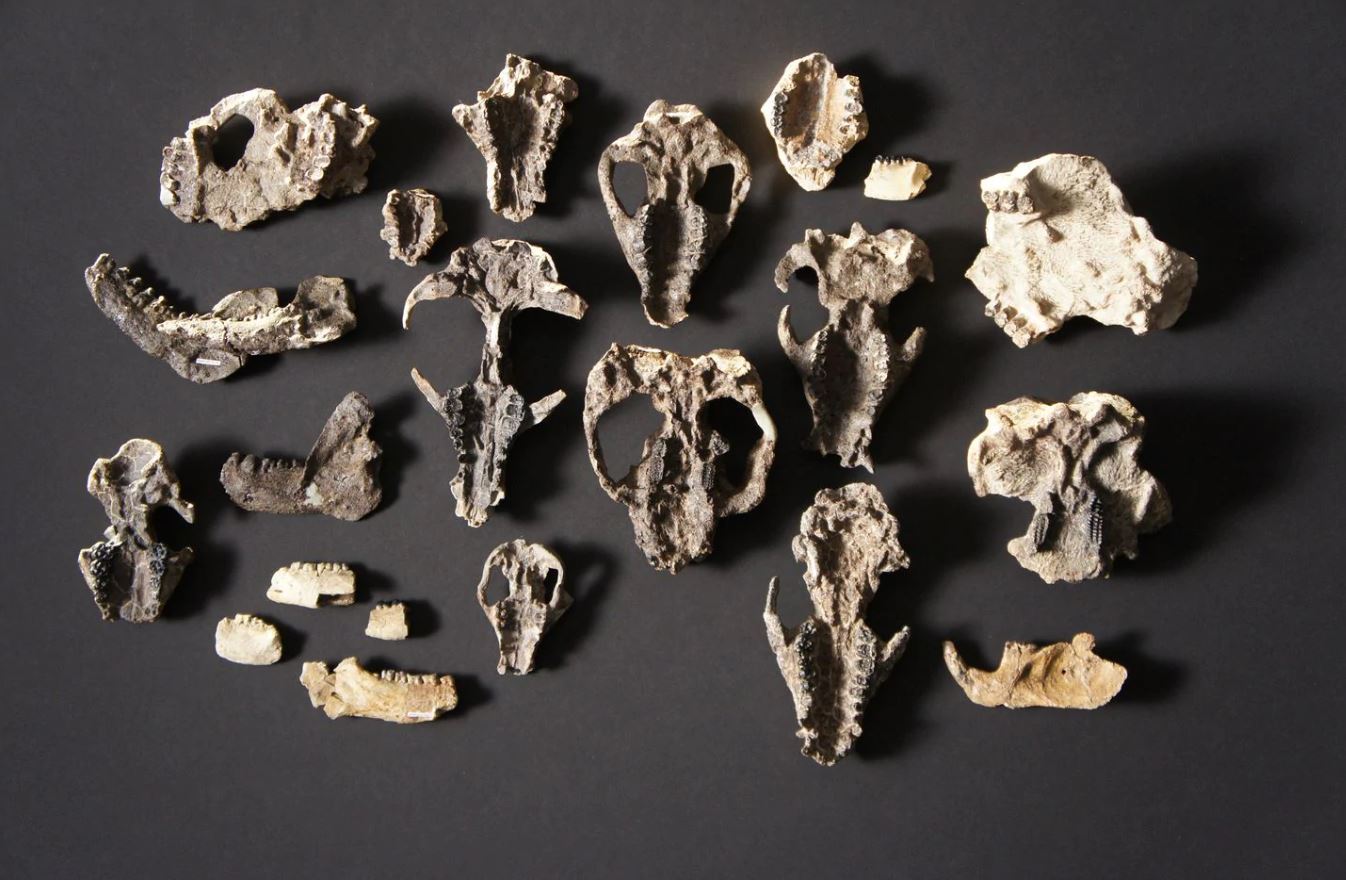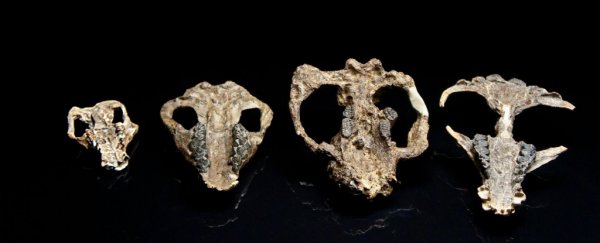Seared into the brain of paleontologist Tyler Lyson is the date he cracked open the skull: 10 September, 2016.
Before that discovery, Lyson and his colleagues had struck out at Corral Bluffs, Colorado, a site worked by fossil hunters since the 1930s.
As the hours passed at the end of the field season, with little to show, Lyson recalled a trick he learned from South African paleontologists - look not for bones but for strange rocks. A whitish lump, a blob like a squashed bread loaf, caught his eye.
"I picked it up, and cracked it with my rock hammer, and broke it in two. And I could see the cross-section of a mammal skull staring back at me," said Lyson, a curator of vertebrate paleontology at the Denver Museum of Nature & Science, at a news conference Tuesday.
That mammal, a pig-size herbivore named carsioptychus, lived not long after an asteroid carved a 90-mile-wide crater into Earth and ended the age of the dinosaurs.
"It was just, you know, I almost had tears in my eyes," Lyson said.
Lyson had searched for a skull like this for 20 years.
A colleague, Denver Museum paleobotanist Ian Miller, spotted a similar misshapen blob and broke it open. Inside was another mammal skull. A volunteer tapped open a third rock: a third skull.
All of these animals lived in ecosystems still recovering from the Cretaceous-Paleogene extinction, an event that killed 3 in 4 species 66 million years ago.
Corral Bluffs is a gold mine of post-extinction mammal fossils, as Lyson, Miller and a team of scientists reported in the journal Science on Thursday. Rock formations called concretions hid the fossils inside, like chocolate tucked in a candy shell.
Having cracked the code for cracking open fossils, the paleontologists found nearly 1,000 vertebrate remains, including mammal bones, turtle shells and crocodilian skulls. They found 6,000 petrified leaves and other plant parts. They also found 37,000 grains of fossilized pollen.
New York Institute of Technology anatomy professor Simone Hoffmann, who studies mammalian evolutionary history and was not a member of the research team, called the new finds "stunning."
"They were able to go into a lot of detail in that crucial time period that we were lacking before," Hoffmann said. Rock layers and volcanic ash provided a timeline for the site, which spans about a million years of Earth history.
The many fossils showed changes in biodiversity, and the study authors even inferred ancient temperatures from the plants that once grew there.
Crucially, the site includes layers before and after the mass extinction. Before the asteroid hit, that part of Colorado was about as warm as Miami is today, Miller said. Tyrannosaurus rex, triceratops, armored ankylosaurs and duck-billed dinosaurs roamed the forests.
That was, until the massive hunk of metal moving at 150,000 mph (241,000 km/h) punched a hole in the planet near Mexico.
Firestorms baked Alaska within minutes. Tons of earth launched into space and fell back again, heating the atmosphere.

"It was like the temperature of your oven to bake cookies - what it would take to bake cookies - in the world over," Miller said.
Then came acid rain, a nuclear winter and, finally, rampant global warming.
"The Cretaceous came to an end," Miller said, "and the age of the mammals begins."
Of the past 500 million or so years, it's this million-year slice of history that "really informs how our world came to be today," Miller said.
The Corral Bluffs discoveries complement other sites in New Mexico and Montana that contain less comprehensive post-impact fossils, said Sarah Shelley, a mammal paleontologist at the Carnegie Museum of Natural History who did not participate in this study.
Together, the remains show the world's recovery was not a return but a reset.
Mammals had coexisted with dinosaurs for millions of years. The largest mammals weighed roughly 15 pounds, about the size of a raccoon, but no mammal that big survived the Cretaceous-Paleogene extinction.
At Corral Bluffs, in the layer of rock representing 100,000 years after impact, fern spores dominated. The largest mammal that lived to scamper through this Fern World, a rat-like critter, weighed about a pound.
Over the next 200,000 years, ferns gave way to palms. Mammalian diversity doubled. Mammals grew heavier, too, returning to the size of raccoons. (The researchers estimated animal mass from tooth and skull size.)
At 300,000 years post-impact, walnut species appeared; the scientists did not find nuts, but they found walnut pollen. The largest mammal in this period, based on the Corral Bluff fossils, weighed about 50 pounds.
A teenage volunteer working at Corral Bluffs found the world's oldest bean pod, dated to 700,000 years post-impact. Meanwhile, mammals continued to bulk up, reaching the size of wolves.
The proximity of so many types of fossils gives the site its rich detail. "If you have the pollen right next to the fossil, or the plants right next to the fossil," Hoffman said, "then you know they're concurring at the same time."
Legumes remain an important food source for mammals like humans; soybeans, for instance, are among the most planted crops on Earth. The study authors hypothesize that the appearance of nutrient-rich plants alongside the jumps in mammal body size is not a coincidence.
"We speculate that the introduction of these new plant food sources, particularly more caloric-dense food sources such as walnuts and legumes, may have at least helped drive mammal body mass," Lyson said.
That's a logical assumption, but it will be difficult to prove, Shelley said. It's also possible the opposite is true: that new species of mammals influenced plant diversity.
The Corral Bluff fossils will be the subject of a NOVA special, Rise of the Mammals, that broadcasts on PBS on October 30.
2019 © The Washington Post
This article was originally published by The Washington Post.
